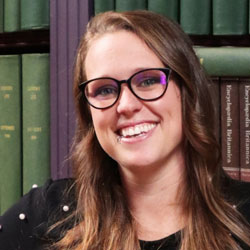Awareness advertising hacks the brain—and unless you have extremely deep pockets, it won't work for you.
Why would I say something so controversial? Because today we're talking all things availability heuristic:
- What it is
- How it affects you and your marketing
- How advertisers use it
- What it has to do with sharks
- What to do about it
(Sharks? Yes, young padawan. Sharks.)
But First: What Is the Availability Heuristic?
The availability heuristic is a person's likelihood of estimating the frequency of an event, or its occurrence, "by the ease with which the instances or associations come to mind." (Tversky and Kahneman, 1973).
In other words, the brain labels information that is more easy to recall as being "more important."
A cognitive bias? Not quite.
It's a good example of how in pop psychology people conflate heuristics with cognitive bias and how that trickles down to marketing.
The availability heuristic is precisely that, a heuristic—a rule set that the brain uses. The rule set can lead to mistakes—which are, themselves, the cognitive biases. But the rule set itself is not a bias.
So... to repeat: the availability heuristic is a mechanism used by the brain to recall and label information, and it can cause lots of biases.
You may have heard me get on my little soapbox (I need it, I'm short) more than once about the ethics of manipulating biases in marketing. And our topic today is a great case in point for why a little bit of information can be dangerous and can lead to silly mistakes in marketing where you waste a lot of money.
The availability heuristic means that easy-to-recall information is overindexed in importance. But what does that actually mean?
How the Availability Heuristic Affects Marketing
Another definition: "the availability heuristic refers to the tendency to form a judgment on the basis of what is readily brought to mind" (Medin and Ross, 1997).
This takes us down a really important path that leads to judgment. When we start to form a judgment and come to a decision, we rarely pull all the information we have from memory; instead, we stop our internal search when we have "enough" information to "make a judgment with subjective certainty" (Schwarz and Vaughn).
When we think of options to choose from, how easily we bring examples of each to mind influences what we choose.
Big brands can take advantage of that. The likes of Nike, BMW, Mercedes, and Apple are fantastic examples.
They put a billboard up with a beautiful picture, not much copy, and make sure it's all over a city. We see the images repeatedly, and because we see them more often we like them more.
That use of the availability heuristic leads to a bias called the mere exposure effect.
Simply by being repeatedly exposed to something, we form a liking (or disliking) to it (Zajonk, 1960-1990). The peak of liking a stimuli (or an ad) is after seeing it 10-20 times (Bronstein 1989).
That is awareness advertising in a nutshell. Awareness advertising is showing up and "making people aware." So if you have deep pockets, and you can afford to consistently show up—and secure that familiarity... you might win.
But you might not! Because as we hinted at earlier, your customers might also dislike it. As Bornstein showed, repetitions can reduce favor. Just showing up isn't enough. And for smaller brands (i.e., the rest of us), it's a waste of time and money.
Just ask sharks about people's favorable opinion of them.
Sharks and the Availability Heuristic
Sharks have had a rough time. The impact of media coverage of shark attacks has significantly skewed whether we think of sharks as an ever-present danger.
The fantastic illustration sums it up perfectly:

Source: Emily Roberts, Verywell
You know what you should be more afraid of? Air freshener. In 1996 there were 13 shark attacks worldwide. But air freshener and its nefarious shenanigans injured 2,600 people the same year.
The real killer lurks in your bathroom...
What Should We Do About the Availability Heuristic?
For more realistic marketing budgets, the opportunity lies in helping your audience.
You might not have the budget to interrupt your audience on a day-to-day basis, but you do have the budget to show up when they need help.
Meet your audience where they are. When they have a problem, they will turn to the Internet for help. And that, amigo, is your opportunity.
Search intent will help you understand what your audience is interested in, and what's a problem they're confronting. Work to understand their awareness journey, and show up to help consistently along the way.
That helps cement you in their memory—in very much the same way big brands do with awareness advertising. And you'll have done it ethically.
Who knew that being good to your audience could also be profitable? ;)




